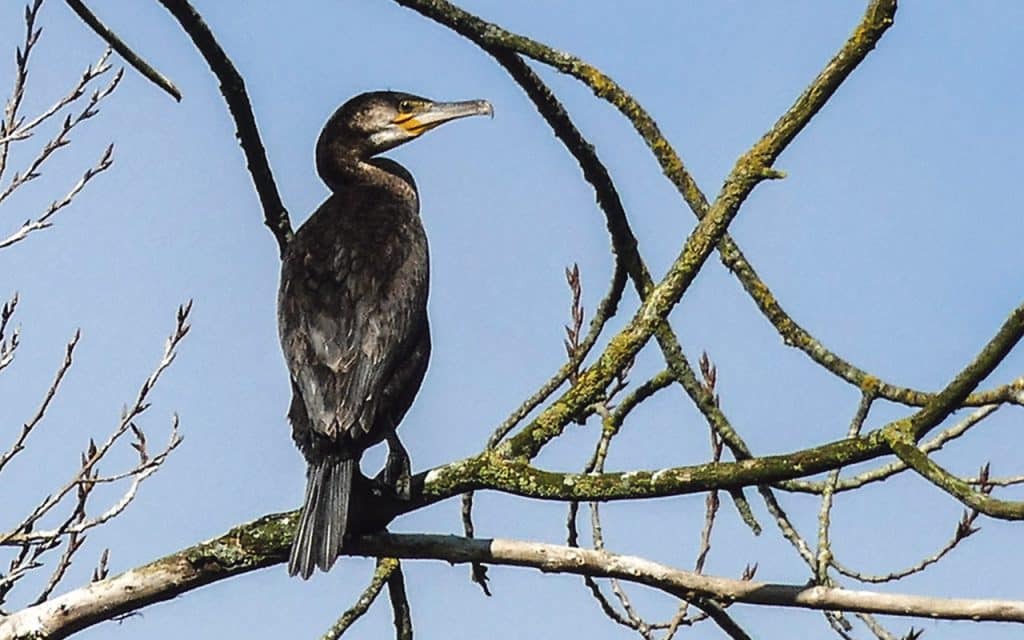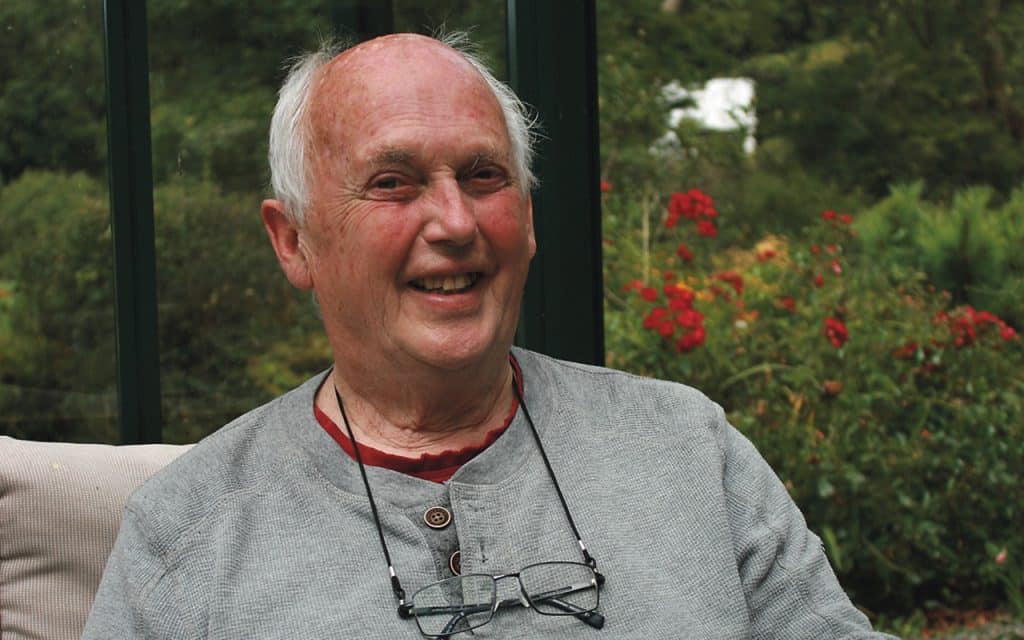This month Branch Committee Member Andrea Reichstein shares some insights into the world of the Cormorant.

From being a bringer of good luck if seen gathered close to a Norwegian village, as a carrier of the spirits of seafarers lost far out at sea, to the bringer of bad luck if seen on a church steeple in Ireland, and even associated with Satan himself in John Milton’s ‘Paradise Lost’; how did this happen to the cormorant? It is not a pretty bird by most standards and it’s not fluffy and cute, but ugly and prehistoric looking. It is dark and has a very deep guttural call, which does not help its reputation.
The Cormorant, ‘Phalacrocorax carbo’, (in Irish ‘Broigheall’) is a common sea bird native to Ireland. However, unlike the Shag, which looks very similar, the Cormorant is also found inland. Its name is derived from Latin and means ‘sea raven’ or ‘sea crow’ due to its conceived similarity to crows. Nonetheless, their closest relatives are pelicans and gannets. If you ever had the chance to see a Cormorant close up you might have gotten the impression it looked a bit dinosaur like, so it probably comes as no surprise to you that one of the oldest known fossils of a bird looks very cormorant-like and most likely was an aquatic bird.
The Cormorant is a medium to large bird. Its adult plumage is mainly dark, while juveniles have varying levels of white on their belly, chest and throat. They gradually darken as they grow older. They have relative short wings and webbed feed making them superb divers but less good at flying. They breed on cliff-ledges or in trees at lakes, along rivers and at the coast; at times also in reed beds. Usually it is easy to spot the trees they breed or roost on from afar, as their droppings are so toxic to the host tree, they end up killing it.
In County Cork, Cormorants are present at all parts of the coast all year and also visit inland waters all year, but the latter mainly in autumn and winter when they can be seen on all kinds of lakes and rivers. Winter roost surveys from 2013 to 2019 found between 400 and 600 cormorants in the estuaries of Cork harbour; this is the highest count in Cork. Numbers of 100-200 birds are not unusual at coastal and estuarine roosts. The biggest inland roost has up to 50 birds along the river Lee, east of Macroom.
Their diet mainly consists of fish but also, if available, amphibians, crustaceans and insects. Their claw-like hooked bill is perfect for grabbing fish and also helps them extract fish from hiding spots on the ground. Cormorants leap into their dive from a swimming position, paddling with their webbed feet to gain speed and steering with their short wings. They can be seen continuously diving and surfacing until they catch prey. They can stay under water for several minutes at a time and there are records of Cormorants diving 45 metres deep. Their feathers are not fully oiled like other water birds, which makes them less buoyant and enables them to dive deep. As a result of this they need to dry their wings after their dives and are often seen sitting on stones or perches close to water with their wings spread wide.
Their impressive fishing capabilities however had them persecuted close to extinction in the past. Since 1976 they have been protected under the Wildlife Act in Ireland and in 1979, under the EU Birds Directive, it became illegal to disturb, capture, or kill Cormorants, or to destroy or rob their nests. As a result of this directive their population bounced back across Europe, but unfortunately they are not out of the woods; there are again calls to ‘manage’ them. So what is the problem? As with any other seabird the Cormorant’s diet consists of fish, which they are good at catching. Unfortunately there is massive pressure on marine ecosystems: overfishing, damage of commercial fisheries to marine habitats, plastic pollution and climate change. All this resulted in a 70 per cent decline in seabirds over the past seven decades. Therefore, considering they eat fish for survival and need to preserve energy, it should not be a surprise that the Cormorant became attracted to inland water bodies with abundant easy to catch fish stock. Unfortunately for the Cormorant, these water bodies are often also popular with anglers or as aquaculture facilities, so there is conflict.
However, the decline of fish stock cannot be simply blamed on the Cormorant, the issue is much more complex. Aside from most inshore waters being overfished by humans, a European research project (see www.intercafeproject.net) has shown that in fisheries where Cormorants are identified as a problem, there is actually a wide range of other issues affecting the fish population: eutrophication (increase in nutrients in the water causing excessive algae growth and low oxygen), pollution, water quality, invasive species and climate change. Managing (killing) Cormorants will not change any of these factors.
On a lighter note, the impressive fishing skills of the Cormorant has made them rather popular and useful in other parts of the world. Mainly in Japan and China, but also in Peru, Greece, and temporarily even in France and England, Cormorants were used for fishing. In this traditional fishing technique fishermen tie a loose snare around the neck of the bird, loose enough to allow it to swallow small fish, but not the big ones. They then train it to regurgitate the fish once back at the boat. Nowadays this method is replaced with more modern techniques and its remaining primary use is as part of the tourist industry.
BirdWatch Ireland
West Cork Branch News
Upcoming outings being held by the Branch are:
Sunday, September 8 The Old Head of Kinsale
Sunday, September 22 Pelagic trip
Visit our website www.birdwatchirelandwestcork.ie for more information about these events. To receive news and reminders about our events join our mailing list by sending an email to mailinglist@birdwatchirelandwestcork.ie. For more information about the Branch, contact Fiona O’Neill at secretary@birdwatchirelandwestcork.ie.
FB @BirdWatchIrelandWestCork
Twitter @BWIWestCork


